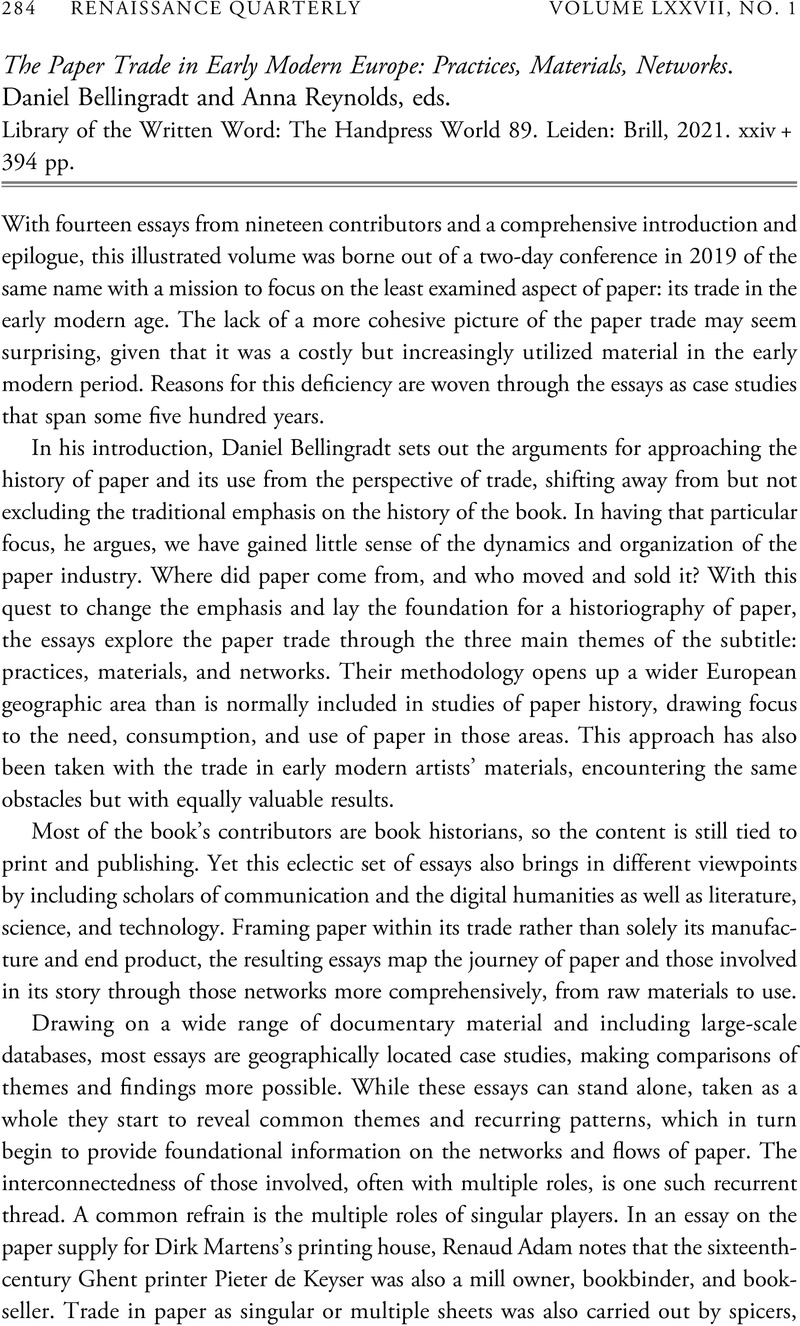No CrossRef data available.
Article contents
The Paper Trade in Early Modern Europe: Practices, Materials, Networks. Daniel Bellingradt and Anna Reynolds, eds. Library of the Written Word: The Handpress World 89. Leiden: Brill, 2021. xxiv + 394 pp.
Review products
The Paper Trade in Early Modern Europe: Practices, Materials, Networks. Daniel Bellingradt and Anna Reynolds, eds. Library of the Written Word: The Handpress World 89. Leiden: Brill, 2021. xxiv + 394 pp.
Published online by Cambridge University Press: 24 April 2024
Abstract
An abstract is not available for this content so a preview has been provided. Please use the Get access link above for information on how to access this content.

- Type
- Review
- Information
- Copyright
- Copyright © The Author(s), 2024. Published by Cambridge University Press on behalf of The Renaissance Society of America



